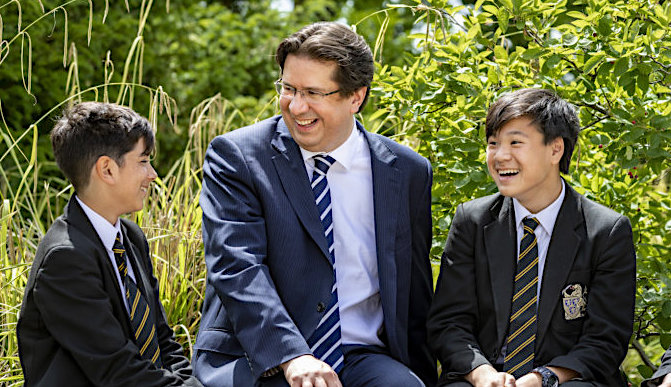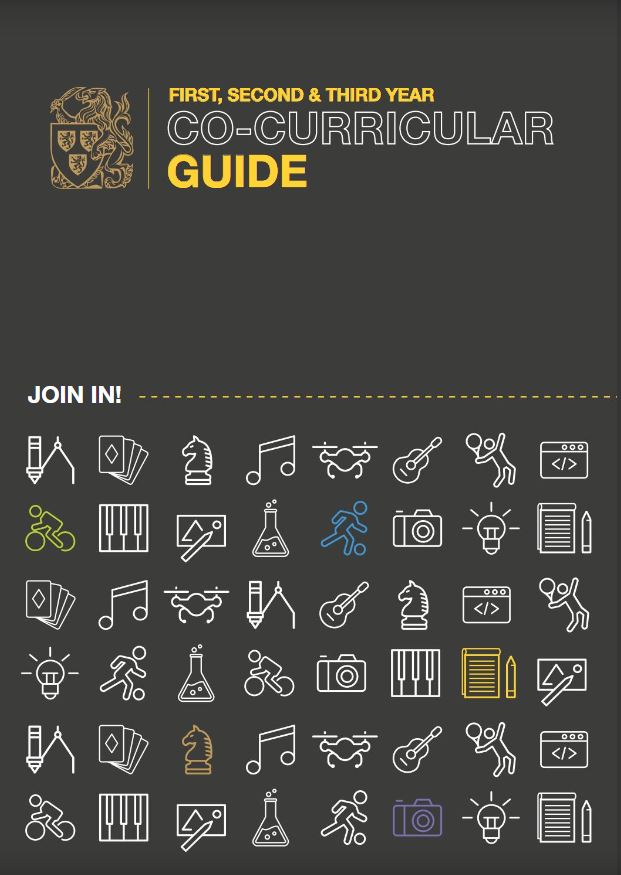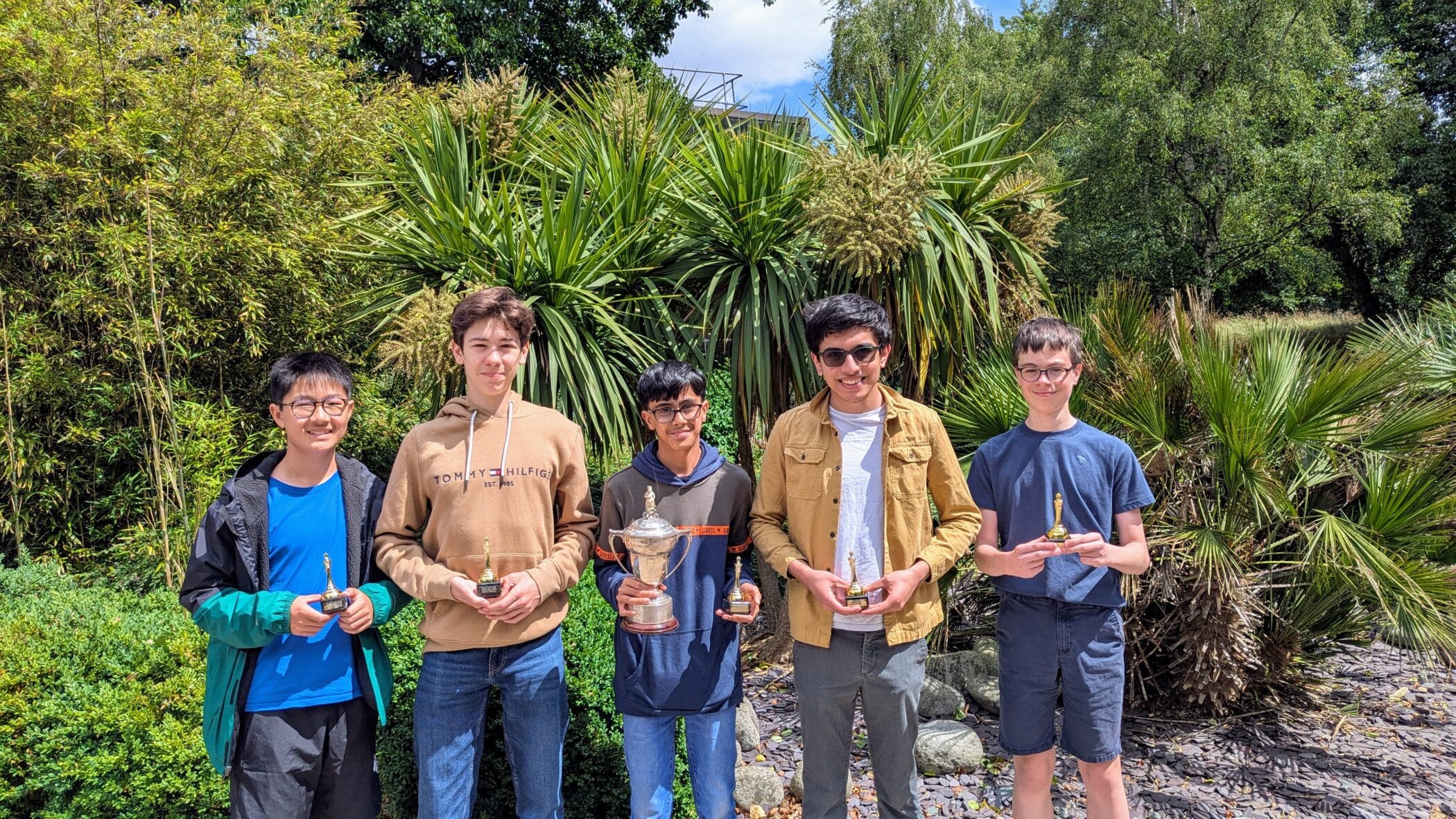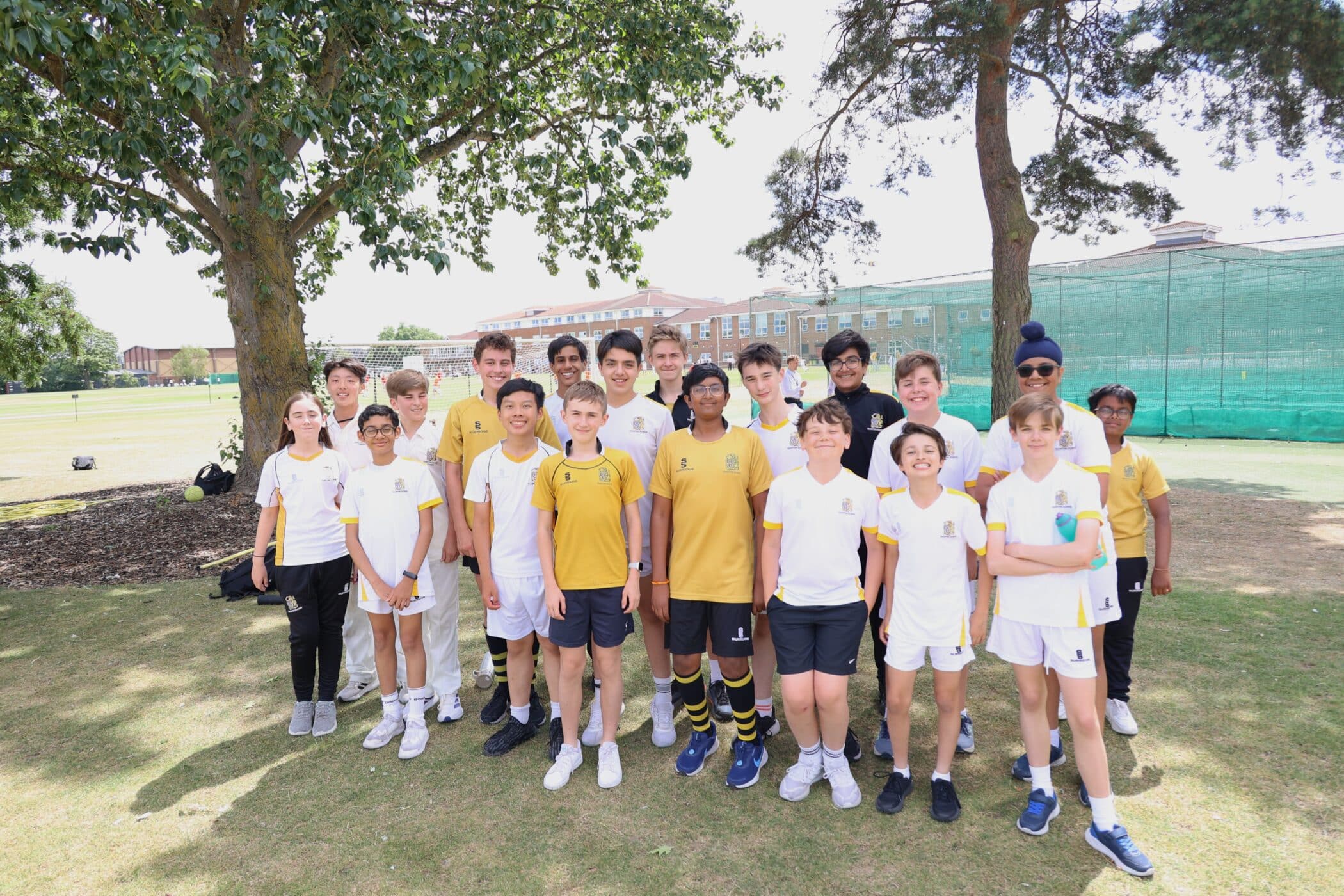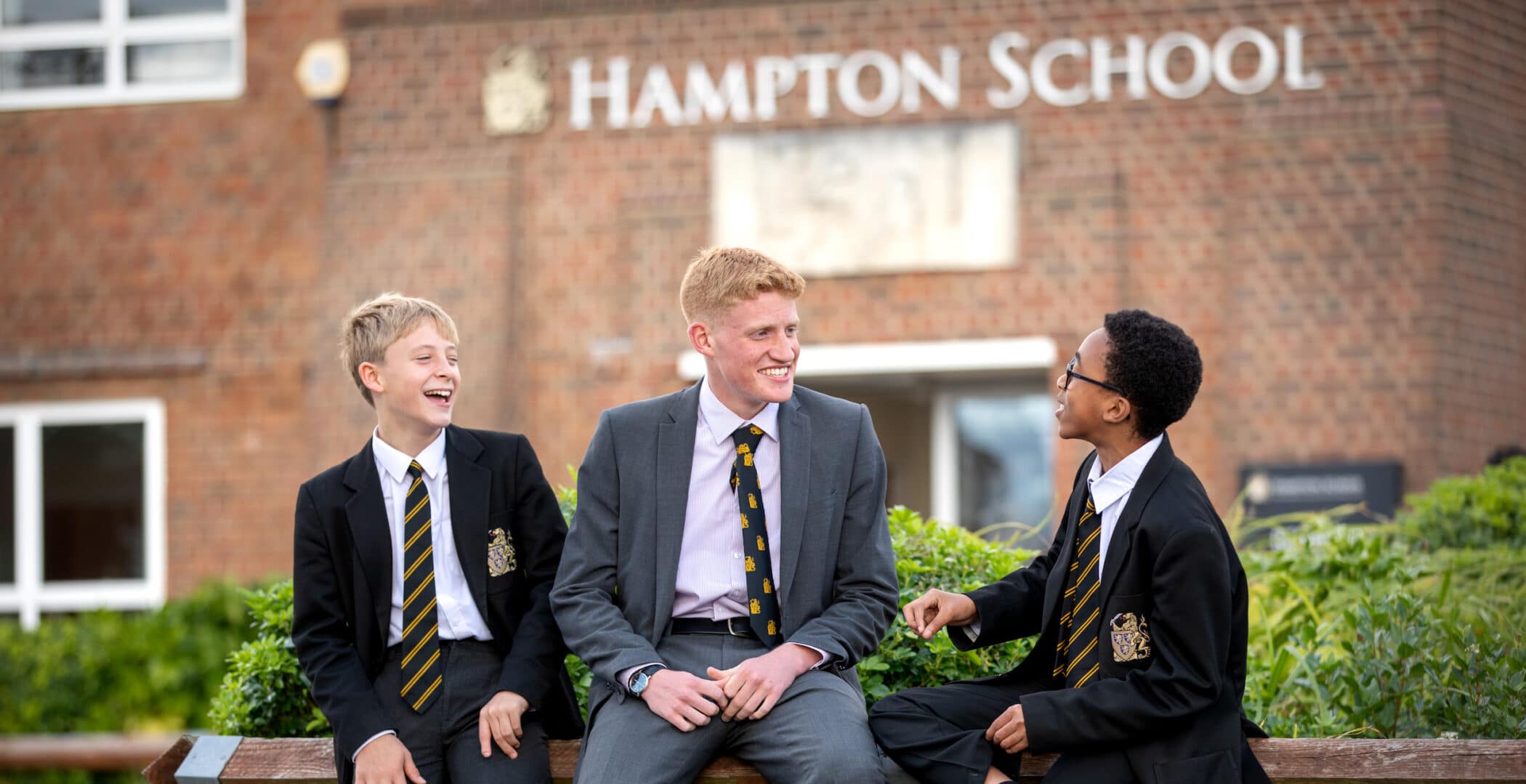Welcome to the Second Year Blog
Welcome back Hamptonians! We’ve had a great 2-week holiday for the half term break and are back and well rested. Now, we are back to learning and spending time with friends. We are also now getting back into our clubs and sports which is great! What it also means is no sleeping in so remember to wake up! I hope everyone is prepared to get back into school and be excited! By Lucas (2P)
MERITS
Well done to the following boys for reaching their merit milestones this week!
Great to see so many merits being signed off this week! Keep collecting them…
Chris Challouma – 10
William Lawson – 10
John Higginson – 10
Thomas Finney – 10
Louis Harvey – 10
Shreyan Kottala – 10
Elijah Hipkins – 10
Tanmay Bansal – 10
Sebastian Woods – 10
Thomas Farzaliyev – 10
Adrian Sprljan – 10
Aditya Kumar – 10
Johnny Rofé – 10
Alexander Lidblom – 10
Neel Mohindra – 10
Prabodha Ariyaratne – 20
Juan-Leonardo Solari Hernandez – 20
Ameya Mathur – 20
Max Flannery – 20
Ben Bates – 20
Kanishk Manjunath – 20
Joshua Ripon – 40
TUTOR INTERVIEWS
Our weekly interviews, are a great opportunity for you to find out a little bit more about your Tutors! So, thank you to Alex and Omer (2F) who interviewed Mr Worrall; Physics Teacher and one half of 2F’s Form tutor team!
What inspired you to become a teacher?
I would say that my real inspiration was trying it out for the first time – I did some tutoring at university and it really made me realise how enjoyable teaching was. I just think teaching is very fulfilling, and I’ve always loved sharing ideas and knowledge.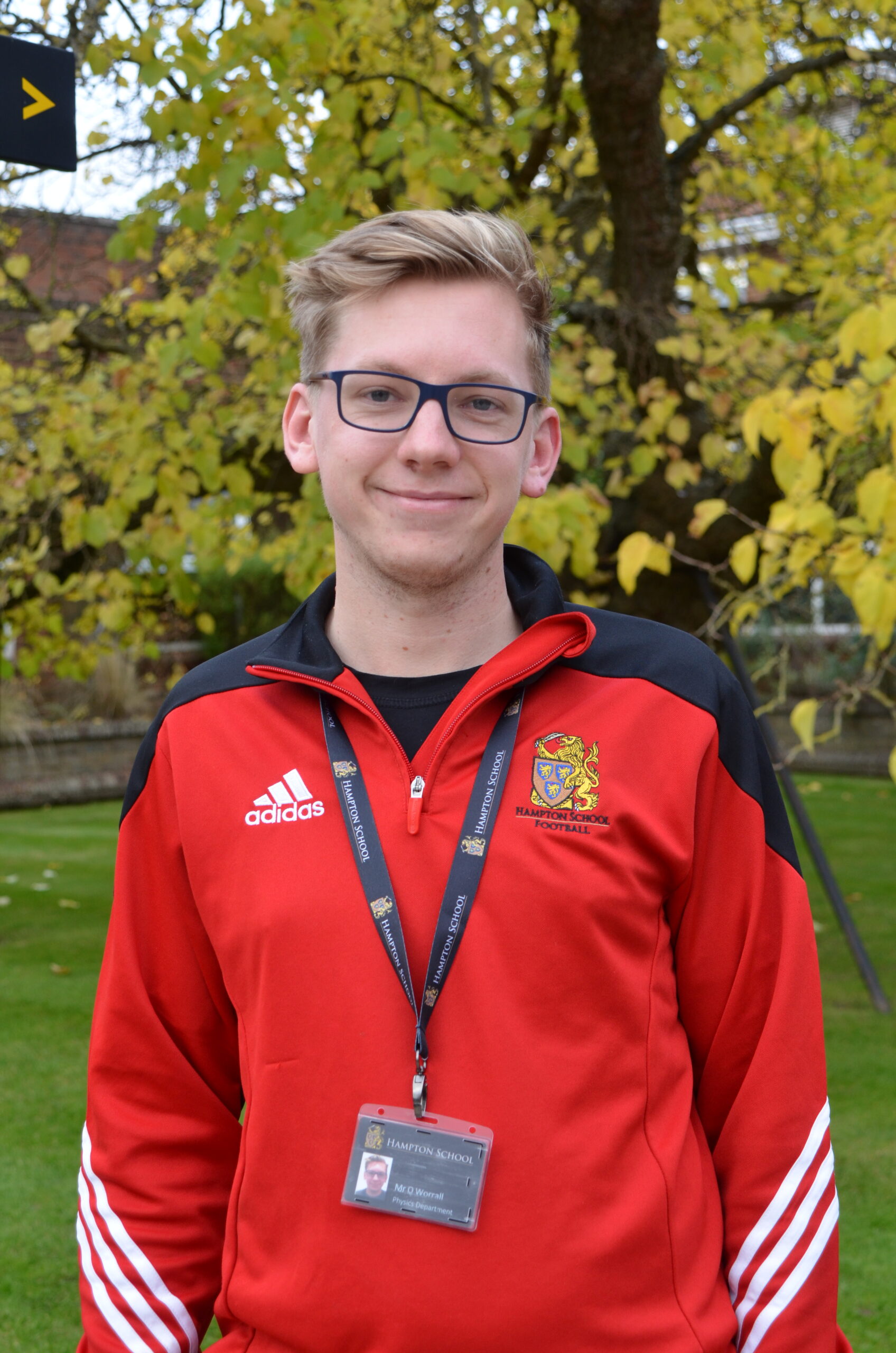
What were your first impressions of Hampton School?
Well, perhaps obviously the first thing that hit me was the sheer size of the school. I was very impressed by how the school flows despite its largeness. I also found it very welcoming and friendly, both from a teacher and pupils’ perspective.
What did you want to be when you were older?
I never seriously thought about what I wanted to become as a child, although I did go through a pro golfer phase! I’ve only really thought about becoming a teacher in the last few years. This is, in fact, the first school I’ve worked in.
What is the best thing about being a teacher?
I would say the fact that every day is different. You never know what to expect. You may teach the same class in the same room each week, yet the lessons will always be different. I also love the fact that you can get involved in sport and co-curricular activities outside of the normal timetable.
What advice would you give to anyone out there thinking about pursuing a career in teaching?
My number one tip would just be to have a go, try it. It’s great because even if at one time you don’t feel like doing it you can always get your teaching qualifications and then pursue a different dream, before coming back to it a few years later.
And finally, what would you say is the hardest thing about being a teacher?
I would have to say how exhausting it is – the sheer intensity. I’m not even a teacher with a particularly full timetable, so I can’t imagine what it would be like for others around the school. But even when I’m not teaching there’s just so much work – marking, planning and more.
The Writers’ Room
This week saw the launch of The Writers’ Room, a creative writing workshop run by the English department. Find out more below:
The Writers’ Room is a fun club that we went to last Wednesday, and we were drafting ideas from various items such as butterflies or jewels and building stories from it. For instance, for the item of my choice, I could think of its importance, what its origins are and ways this object can be used and how it could be used- maybe it leads to a secret room in a certain place or that people have spent years looking for it and it has a secret way to unlock it? I think it is a marvellous way to encourage our Creative Writing skills and a way to develop our imaginations and to be able to transform our ideas into writing. In the coming weeks, we will continue to explore Creative Writing and, as the club is quite long, I think we will be able to do as much Creative Writing as we can. The Club runs every Wednesday for four weeks and we would highly recommend it to anyone who loves to do Creative Writing. By Agalya and Sriyan (2L)
COP26
This week saw leaders from around the world gather in Glasgow for the COP26 conference. Aditya (2B) tells us all about it:
What is COP26? On Monday 1 November the COP26 Climate Conference began. COP26 stands for Conference of Parties, and this is the 26th meeting being held. This is taking place from 1 to 12 November. The summit is being held in Glasgow, Scotland. This conference is where many countries’ leaders, like the UK and US, discuss how to tackle climate change. For example, they have decided that they want to limit climate change to a 1.5 °C increase by 2030, and currently it is 1.2 °C and heading for a 2.7 °C increase by 2030. Prime Minister Boris Johnson stated that ‘If this was a football match we would be 5-1 down between humanity and climate change.’
What can we do to help climate change? The main thing that we can do is to reduce how many trees we cut down, and this will significantly reduce carbon dioxide emissions (carbon dioxide is a greenhouse gas) and will help climate change. However, there is one more greenhouse gas, Methane. Methane is produced by cows, and beef production emits A LOT of methane. So, what we can do is that maybe next time we are in a restaurant, or even the dining room, and the main course is beef burger, try and go for the chicken burger, or to really help go for the vegetarian burger. It might not sound like big a change, but if we all follow this it will make a huge impact.
Which countries produce the most carbon emissions? China, India, the USA and Russia produce the most carbon emissions, and many countries at COP26 have signed a pledge saying that they will cut down
The Hampton Community have been thinking about small things they can do to help the climate crisis. You’ll hear more about this in your PSHE lesson next week. Take a look at some of the pledges that have already been made:
FOOTBALL
On Monday the F team had their first game vs Ibstock School. They won 5-0 and were the only team to get a victory. They played really well using the wings to their advantage. It was great fun and a good start to the season. The D’s also managed to scrape a draw with a last second equaliser. The A’s also continue their journey in the cup with a 12-0 win. We look forward to what else Hampton football can execute. By Aarush (2J)
Great to see our budding sports reporters writing for the Hampton Sports Chronicle. Two great reports this week from Alex W (2F) reporting on the U13A victory in the ESFA cup competition here and Arun C (2F) reporting on a narrow defeat for the U13C team here.
THE PROBLEM OF LOCUSTS
A ravenous swarm stretches out as far as the eye can see. It has no commanding general or leader, its goals are to eat, breed and move on. The relentless advance transforms pastures and farms into wastelands.
These problematic creatures are desert locusts, infamous for their massive swarms and capacity for destruction. But these insects are not always insatiable. In fact, for most of their lives, desert locusts are no more dangerous than garden grasshoppers. So, what turns these harmless insects into a crop consuming plague? To answer that, we must start from the beginning.
Desert locust eggs are laid in the damp depths of desert soil, in regions stretching from North Africa to South Asia. During the dry weather typical in these ecosystems, desert locusts live a solitary lifestyle. Adolescent hoppers will spend a few lonely weeks foraging for plants, before growing wings, reproducing and dying. But when a region experiences an abundance of rain, the scene is set for a startling transformation. Increased moisture supports more vegetation for newly hatched hoppers to eat, leading to large groups feeding in relative proximity. Frequent contact stimulates their legs releasing a hormone that causes them to cluster even closer. Crowds of locusts produce huge amounts of excrement, which carries a pheromone that furthers their transformation. The locusts diet shifts to include plants with toxic alkaloids. This makes the locust put on a striking pattern that warns predators of its toxicity. Small bands merge into millions, which now down all plant life in a kilometre-wide path. After a week, they expand and shed their exoskeletons, growing 50 times their hatching weight in a month. Finally, the metamorphosis is complete. The adults beat their translucent wings and take flight.
This is now a full-fledged swarm. In this phase, these insects appear so different from their solitary counterparts that they were thought to be a separate species. A typical swarm contains more locusts than there are people on the planet. They then lay eggs for the next swarm generation. While they usually die in months, swarms can last for years. Fortunately, swarms die down after eating all of the available food. But with fields of wheat more and more common, these swarms only continue to grow. By Kanishk (2W)
CRICKET WORLD CUP ROUND-UP
By Joshua and Aditya (2B)
The Cricket world cup began on 17 October and we are quite close to the semi-finals. England have won four out of four games while the favourites India have stuttered in their first two games against Pakistan and New Zealand.
Here is a brief look at the table. A win is 2 points and a loss is 0 points and everyone plays each other in the group. Here is the world cup website. https://www.t20worldcup.com. The top two teams get into the semi finals. England and Pakistan have already made the semi finals but it is unsure how the table will look after the games have been played.
Group 1
- England 8 points
- South Africa 6 points
- Australia 4 points
- Sri Lanka 2 points
- West Indies 2 points
- Bangladesh 0 points
Group 2
- Pakistan 8 points
- Afghanistan 4 points
- New Zealand 2 points
- Namibia 2 points
- India 0 points
- Scotland 0 points
ACHIEVEMENTS
A big well done to Pranavan (2F) in his sporting achievements over half term. Pranavan competed in a badminton tournament, finishing an impressive second place in his doubles match. He also played in a cricket tournament in which his team came third!


CLUBS Galore
At the start of a new half term, there are lots of exciting clubs for Second Years to try – have a look below and pick a club!
From Art Club to Cryptic Crosswords, Book Club to Badminton, why not have a go and try something new!
WEEKLY QUESTIONS
Welcome to the Weekly Questions! Every week, we’ll post 10 general knowledge questions, and, if you have a go, you can be awarded a merit if you send your answers to Miss Kugele (r.kugele@hamptonschool.org.uk)! This week’s history themed questions have been set by Ben and Joshua (2J)
When was the Battle of Bosworth?
- Queen Elizabeth II’s grandfather was which Monarch?
- Who was the second Catholic Pope?
- When was NATO created?
- When did the Great Schism begin?
- What was the title of Martin Luther King Jr’s famous speech? ‘
- Which Prime Minister founded the NHS?
- What year was the Berlin Wall takes down?
- Who was the Egyptian Goddess of Cats?
- What was the Ancient Roman name for Rome?
Here are the answers to last week’s questions:
- What is the smallest country in the world? Vatican City
- Which flag is this? Algeria
- Which country has the most islands? Sweden
- Which are the 4 most populated countries? China, India, USA, Indonesia
- What river runs through Baghdad? Tigris River
- What is the highest mountain in Britain? Ben Nevis
- What is the capital of Mongolia? Ulaanbaatar
- Which 3 states in the USA have four letters in their name? Iowa, Utah, Ohio
- Which currency is used in the Dominican Republic? Dominican Peso
- What is the capital of Senegal? Dakar
Have a great weekend!
Back to All Blogs


